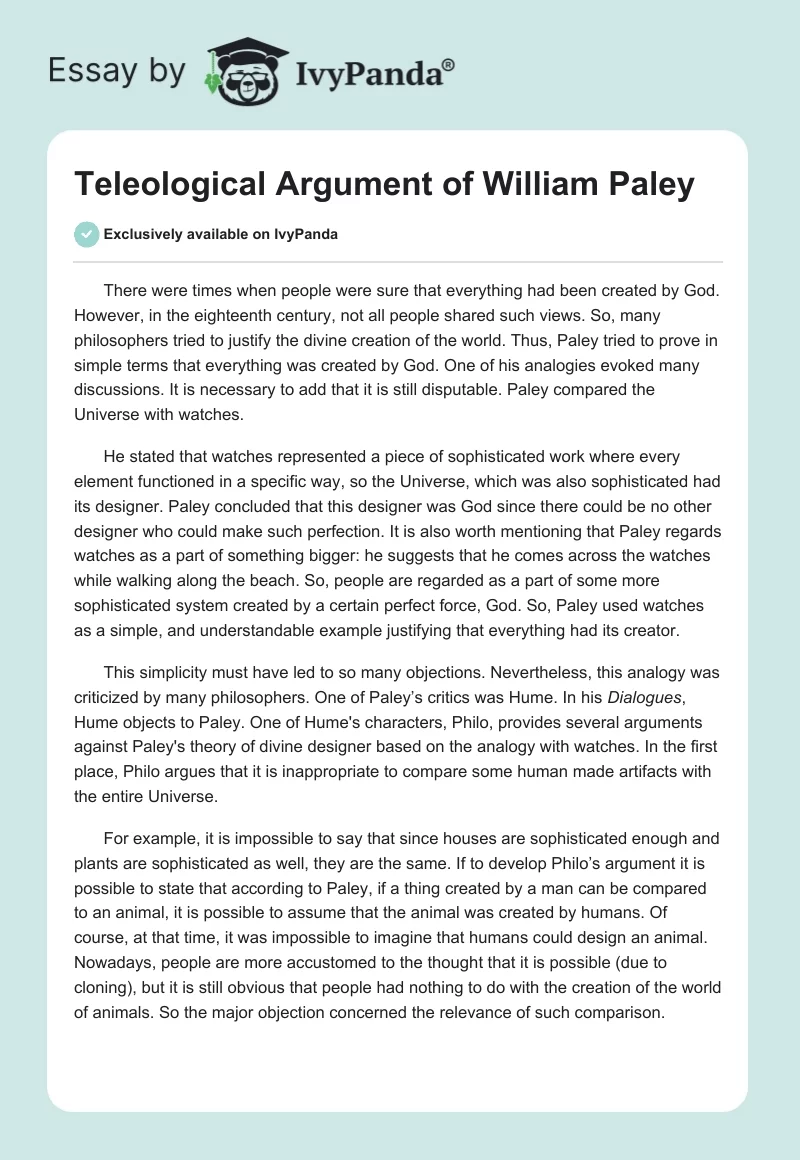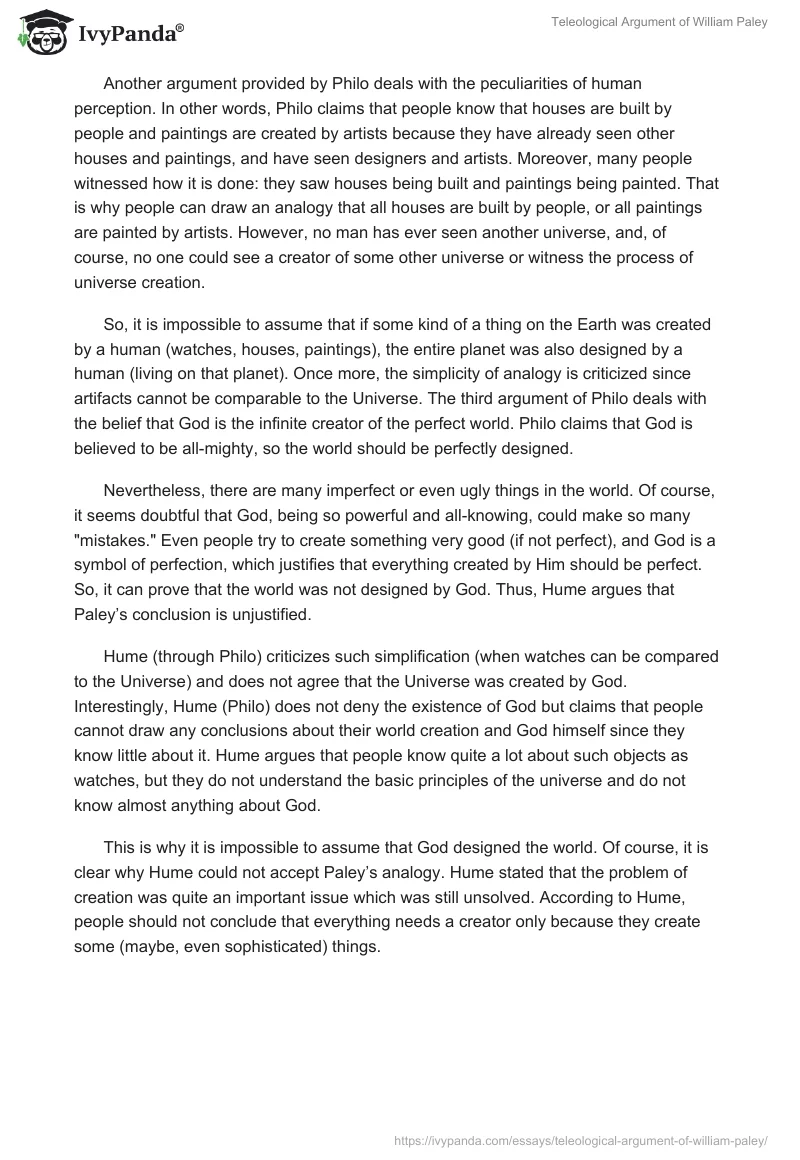There were times when people were sure that everything had been created by God. However, in the eighteenth century, not all people shared such views. So, many philosophers tried to justify the divine creation of the world. Thus, Paley tried to prove in simple terms that everything was created by God. One of his analogies evoked many discussions. It is necessary to add that it is still disputable. Paley compared the Universe with watches.
He stated that watches represented a piece of sophisticated work where every element functioned in a specific way, so the Universe, which was also sophisticated had its designer. Paley concluded that this designer was God since there could be no other designer who could make such perfection. It is also worth mentioning that Paley regards watches as a part of something bigger: he suggests that he comes across the watches while walking along the beach. So, people are regarded as a part of some more sophisticated system created by a certain perfect force, God. So, Paley used watches as a simple, and understandable example justifying that everything had its creator.
This simplicity must have led to so many objections. Nevertheless, this analogy was criticized by many philosophers. One of Paley’s critics was Hume. In his Dialogues, Hume objects to Paley. One of Hume’s characters, Philo, provides several arguments against Paley’s theory of divine designer based on the analogy with watches. In the first place, Philo argues that it is inappropriate to compare some human made artifacts with the entire Universe.
For example, it is impossible to say that since houses are sophisticated enough and plants are sophisticated as well, they are the same. If to develop Philo’s argument it is possible to state that according to Paley, if a thing created by a man can be compared to an animal, it is possible to assume that the animal was created by humans. Of course, at that time, it was impossible to imagine that humans could design an animal. Nowadays, people are more accustomed to the thought that it is possible (due to cloning), but it is still obvious that people had nothing to do with the creation of the world of animals. So the major objection concerned the relevance of such comparison.
Another argument provided by Philo deals with the peculiarities of human perception. In other words, Philo claims that people know that houses are built by people and paintings are created by artists because they have already seen other houses and paintings, and have seen designers and artists. Moreover, many people witnessed how it is done: they saw houses being built and paintings being painted. That is why people can draw an analogy that all houses are built by people, or all paintings are painted by artists. However, no man has ever seen another universe, and, of course, no one could see a creator of some other universe or witness the process of universe creation.
So, it is impossible to assume that if some kind of a thing on the Earth was created by a human (watches, houses, paintings), the entire planet was also designed by a human (living on that planet). Once more, the simplicity of analogy is criticized since artifacts cannot be comparable to the Universe. The third argument of Philo deals with the belief that God is the infinite creator of the perfect world. Philo claims that God is believed to be all-mighty, so the world should be perfectly designed.
Nevertheless, there are many imperfect or even ugly things in the world. Of course, it seems doubtful that God, being so powerful and all-knowing, could make so many “mistakes.” Even people try to create something very good (if not perfect), and God is a symbol of perfection, which justifies that everything created by Him should be perfect. So, it can prove that the world was not designed by God. Thus, Hume argues that Paley’s conclusion is unjustified.
Hume (through Philo) criticizes such simplification (when watches can be compared to the Universe) and does not agree that the Universe was created by God. Interestingly, Hume (Philo) does not deny the existence of God but claims that people cannot draw any conclusions about their world creation and God himself since they know little about it. Hume argues that people know quite a lot about such objects as watches, but they do not understand the basic principles of the universe and do not know almost anything about God.
This is why it is impossible to assume that God designed the world. Of course, it is clear why Hume could not accept Paley’s analogy. Hume stated that the problem of creation was quite an important issue which was still unsolved. According to Hume, people should not conclude that everything needs a creator only because they create some (maybe, even sophisticated) things.


